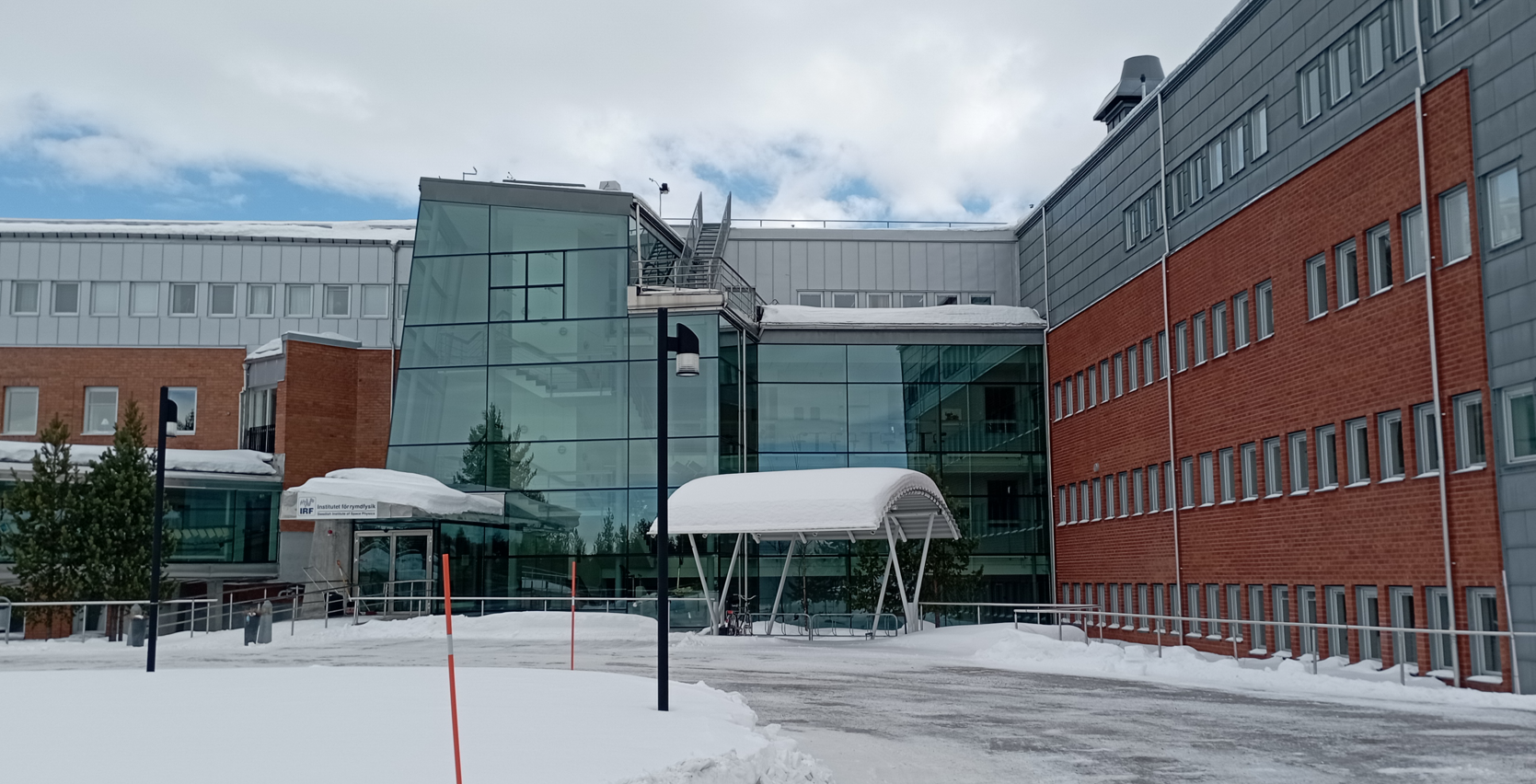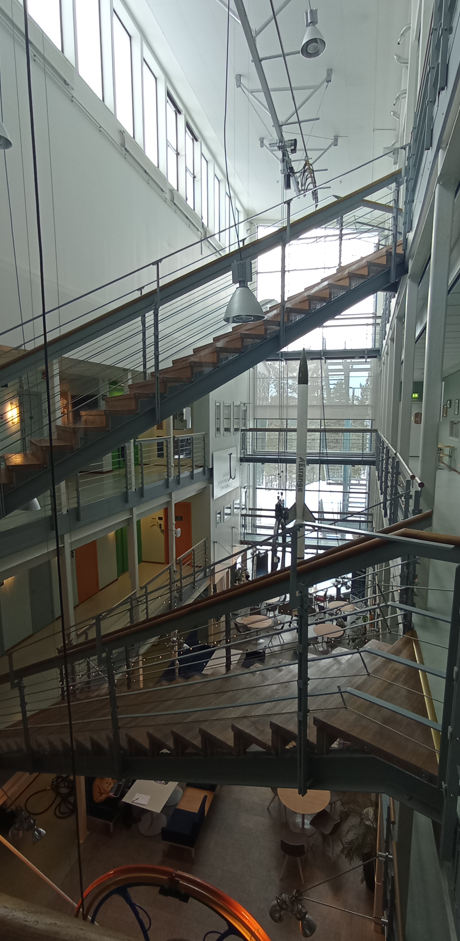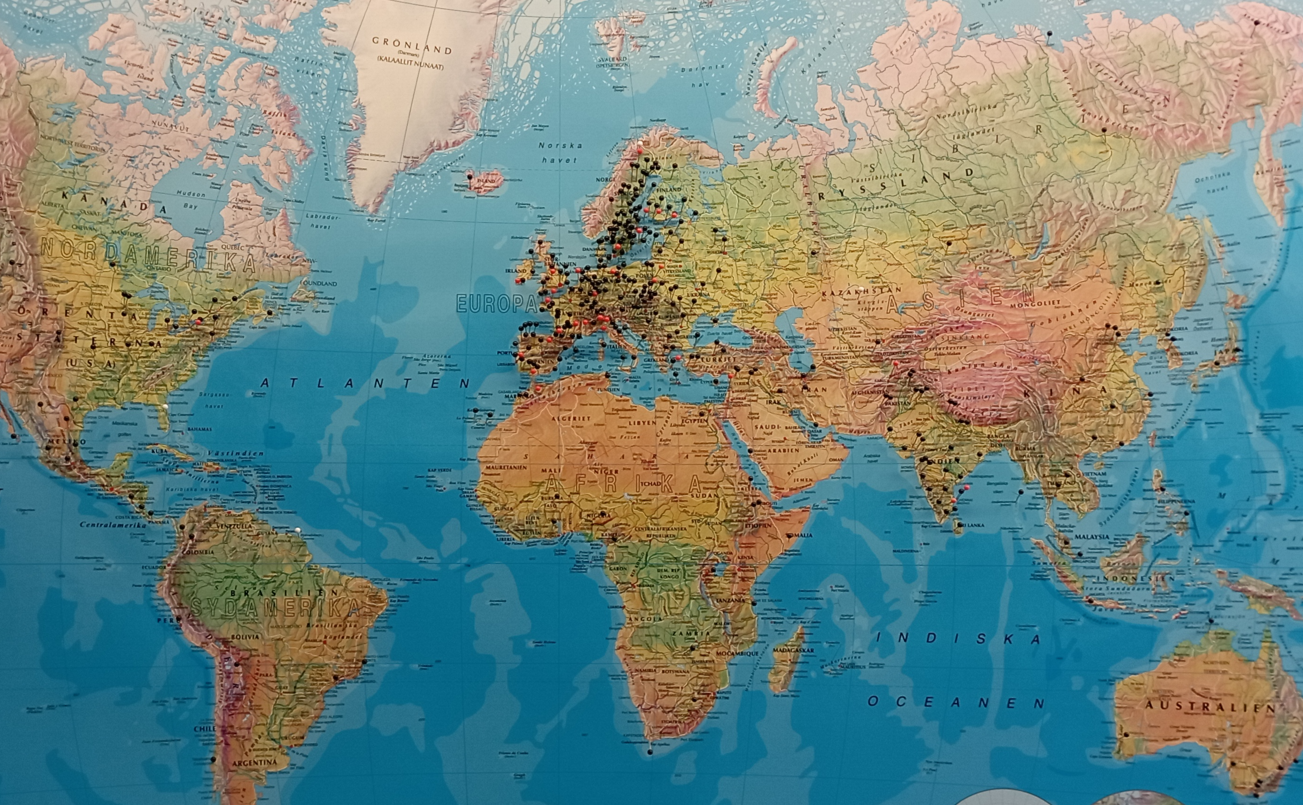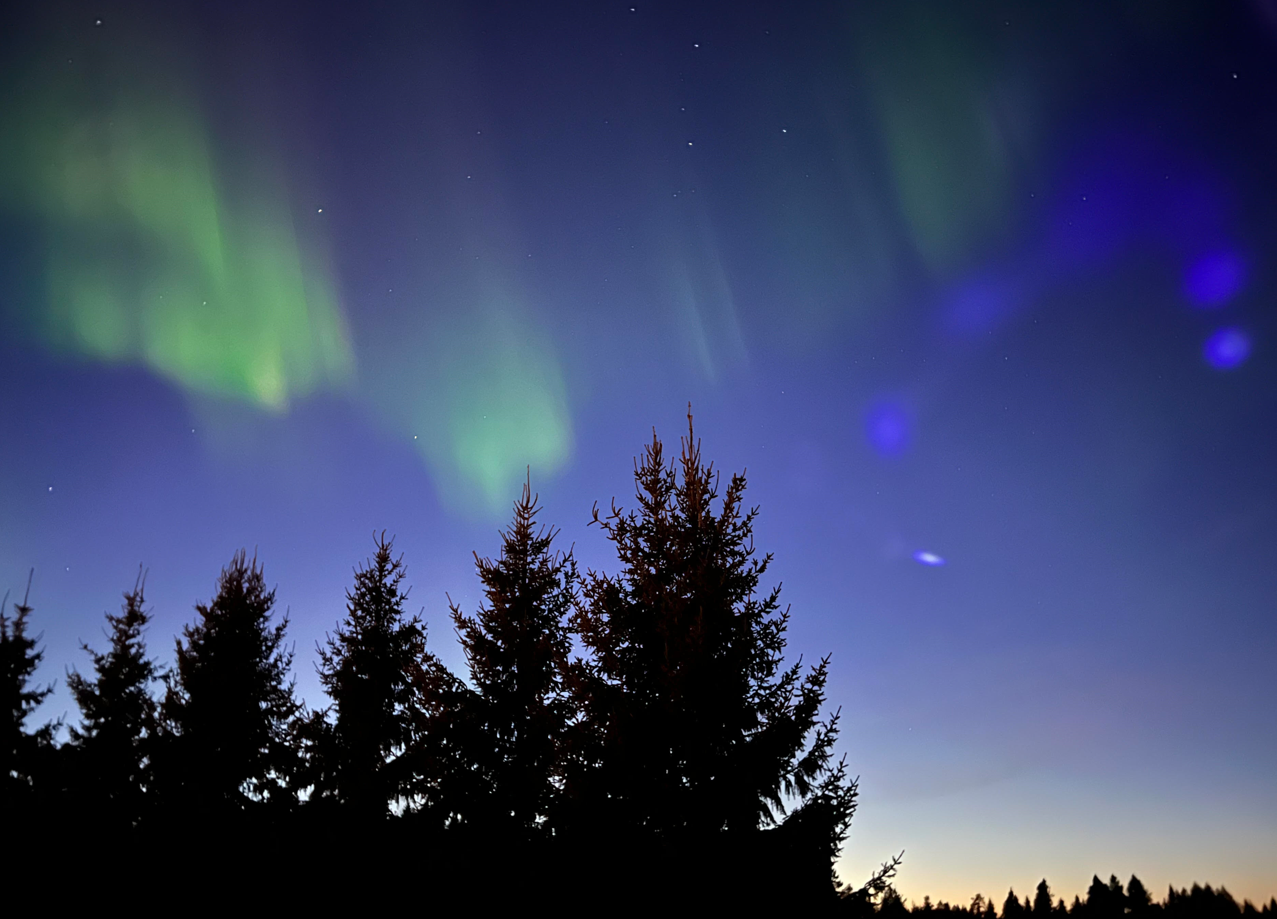
Above: the IRF from the visitor parking
I visited the institute yesterday and today, by driving due north from Lulea among pleasant snow-covered hills for four hours. In Lulea I am spending three months in a sort of sabbatical pause from my particle-physics-focused research. There, I joined Prof. Fredrik Sandin and Prof. Marcus Liwicki, and their teams at the computer science department. This way I am learning a lot about neuromorphic computing, which might become a future paradigm-changing player in the design and operation of future scientific instruments for fundamental physics.
But neuromorphic computing is a topic for a different post. Today, instead, I wish to describe the institute, which designs all kinds of instruments and satellites, many of which are then launched in the nearby Esrange facility. I was given an extensive tour of the center by the chair of Space Systems for Lulea University of Technology here, René Laufer. René is a volcaning space engineer, motorbike rider, and a professor with multiple appointments. He has a mile-long background in space science, rocket science, planetary science, and everything in between, and already talking to him was highly enlightening. But he was also extremely kind as he showed me around and explained to me the details of many projects that are ongoing in Kiruna.
The place itself, a few kilometers south of the minerary town, is small but impressive - besides the beautiful architecture of its interiors, and the well-groomed display of instruments and satellites that stud its 60 years of history, the institute is a pleasant environment for students and researchers. A Space master in Space Science and Technology is offered here, in conjunction with five European universities. Students have lots of facilities and spaces dedicated to their relax; as I write this in the room next to me a few are playing table tennis, and others are playing the piano in the fika room (where people can have coffee or hang around during lunch breaks).
Below: a view of the interiors of the Lulea institute for Space Technology in Kiruna.


Above: a world map on display at the centre, where every student and staff member added a pin to indicate their place of origin.
Besides many laboratories where instruments and payloads of satellites are designed and assembled, a few testing instruments recreate the conditions of outer space in terms of temperature variations and vacuum, or in terms of solar radiation such as those that asteroids withstand when they travel close to the Sun (say, at 8 million km from the surface). I will discuss the former in a separate post which concerns a project that is being carried out by a Polish team of university students. They won the chance of building a payload for one of the future launches from ESrange. The latter instrument is shown below.

Above: a testing station where the intense solar radiation experienced by bodies that perform close fly-bys on our Sun (e.g. asteroids on elliptical orbits) can be studied and simulated.
One of the things that impressed me was René's description of the simulation work one of their teams has been developing with the instruments that are built to fly on satellites. Of course, the high cost of launching satellites into space demands severe testing of every functionality and component, to prevent failures as much as possible. Still, there are huge costs connected with the facilities required for these extensive tests. Hence, especially for University research, instruments may not necessarily withstand the standards of testing that are common e.g. in ESA or NASA space missions. What is done for these lower-scope missions is to implement a fully simulated environment that describes the conditions withstood by the hardware during launch and in space, but one which allows the real hardware to replace the simulated parts in stages.
In a typical "digital twinning" setup, you build a digital computer simulation of a complex instrument in order to acquire data on its behaviour in all sorts of conditions, learning how to improve it and to detect weaknesses, for example. In the scheme they implement, instead, the simulation may initially be a complete digital twin of the real system, but this simulation is adiabatically turned in a hybrid scheme where hardware is progressively inserted as part of the loop, until the simulated instrument is replaced with its real twin, a piece of hardware due to fly on a satellite.
This hardware thus gets embedded in a simulated space environment, and while blissfully unaware of its real whereabouts (the lab on Earth), it operates as if it were in space, with the simulation only taking care of simulating the environment and the interaction of the instrument with it. This allows to speed up and simplify enormously the testing, and to greatly lower costs while retaining a good level of failure proof.
Another cool IRF project I came to know about involves the recent successful launch which took place just two weeks ago, when a sounding rocket was sent from ESRange to the upper atmosphere to study the conditions of near earth space, and to simulate the physical mechanisms at the basis of aurora formation. The rocket released eight cans filled with different ions (I believe barium and strontium) along the way; these generated beautifully coloured aurora phenomena.
The collected data will allow better understanding of the plasma physics phenomena at the basis of the aurora formation, and to improve our models of space weather. More information on that project can be found here. A picture showing the eight blue aurora-like glows (on the right) as well as a real aurora (on the left) is shown below.

Above: the sky over the Esrange in Kiruna shortly after the eigth release (Courtesy R. Laufer)
I will describe in the second part of this post three other ongoing projects I got to know about, as this text has already become too long. For now, I invite bachelor students who are looking for a place where to do a fun masters in space technology to look no further - the Kiruna centre is a very pleasant place to further your studies, which offers direct contact with a multi-functional facility for space research, as well as a load of exciting programs. For more information see here.



Comments